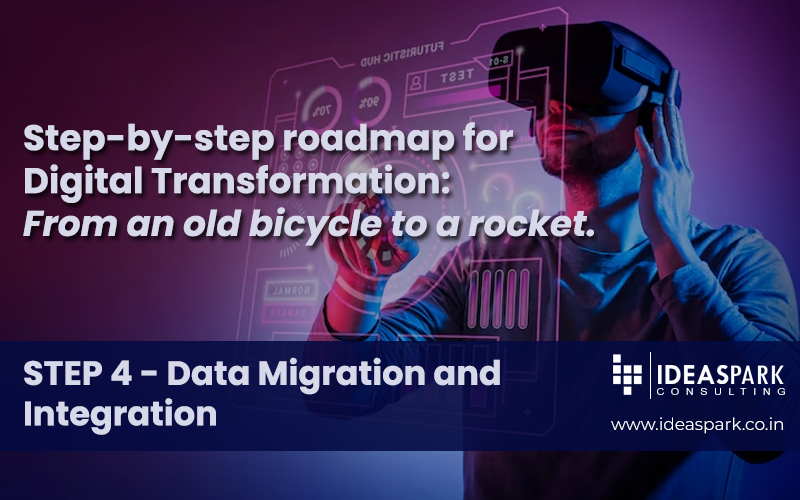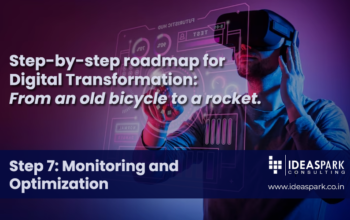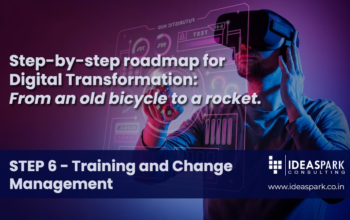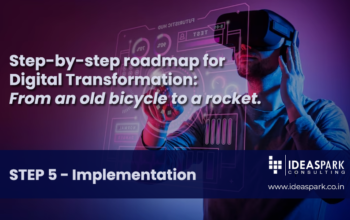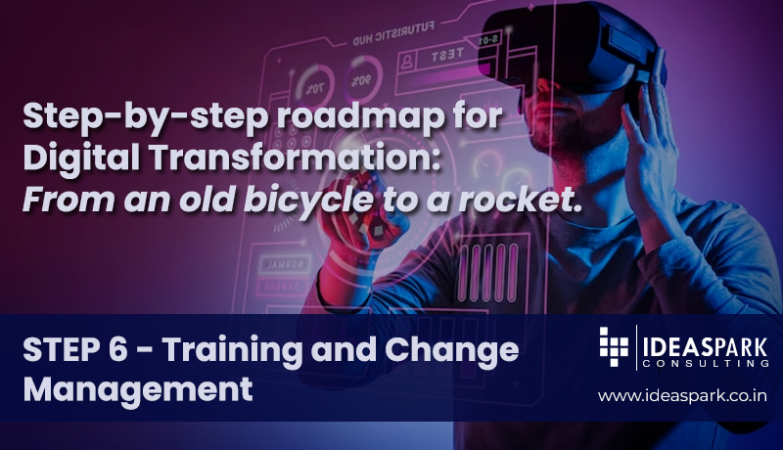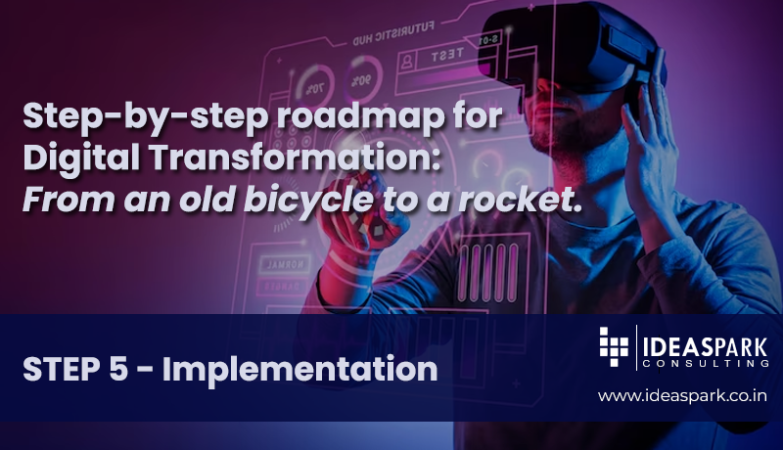In our earlier conversation, we delved into the concept of “Digital Transformation and its initial steps,” and the second step, “Set Clear Objectives.” We have also discussed about he Step 3- “Technology Selection” too.
If you haven’t had the opportunity to review it yet, please take a moment to explore the respective links provided.
Step 4 of the roadmap for digital transformation, which involves data migration and integration, is a critical phase in the journey from an old bicycle to a rocket. This step focuses on transferring existing data from legacy systems to modern digital platforms and integrating various systems to ensure seamless operations and data flow across the organization. Let’s delve into an in-depth analysis of this step:
Understanding the Importance: Data migration and integration are crucial for digital transformation because they enable organizations to leverage their existing data assets while transitioning to new digital platforms. By migrating data from legacy systems to modern ones and integrating different systems, organizations can ensure that data is available where and when it’s needed, facilitating informed decision-making and enhancing operational efficiency.
Assessment and Planning: Before initiating the data migration and integration process, it’s essential to conduct a comprehensive assessment of existing data sources, systems, and workflows. This assessment helps identify the scope of migration, potential challenges, and opportunities for optimization. Based on the assessment, a detailed migration and integration plan should be developed, outlining objectives, timelines, resource requirements, and risk mitigation strategies.
Data Mapping and Cleansing: Data mapping involves identifying and categorizing data elements in the legacy systems and mapping them to corresponding data fields in the target systems. During this process, data cleansing techniques are often employed to ensure data quality and consistency. This may involve removing duplicates, standardizing formats, and resolving data discrepancies to prevent issues during migration and integration.
Choosing the Right Tools and Technologies: Selecting appropriate tools and technologies is crucial for successful data migration and integration. Organizations may utilize data migration tools, ETL (Extract, Transform, Load) software, and middleware platforms to facilitate the transfer and integration of data. It’s essential to choose tools that align with the organization’s requirements, scalability, and compatibility with existing systems.
Developing Migration Scripts and Workflows: Migration scripts and workflows are developed to automate the process of extracting data from legacy systems, transforming it as needed, and loading it into the target systems. These scripts ensure consistency, accuracy, and efficiency in data migration. Additionally, workflows define the sequence of steps involved in the migration process and establish checkpoints for validation and error handling.
Testing and Validation: Prior to full-scale migration, thorough testing and validation are conducted to ensure that data migration and integration processes function as intended. This includes testing data extraction, transformation, and loading procedures, as well as validating data integrity and consistency across systems. Testing also helps identify and address any issues or discrepancies before final implementation.
Deployment and Rollout: Once testing is complete and all necessary adjustments have been made, the data migration and integration processes are deployed in production environments. Careful planning and coordination are essential during this phase to minimize disruption to ongoing operations. Organizations may opt for phased deployment strategies to mitigate risks and ensure a smooth transition.
Monitoring and Optimization: After migration and integration are complete, ongoing monitoring and optimization are necessary to ensure the continued performance and reliability of the digital ecosystem. This involves monitoring data quality, system performance, and user feedback to identify areas for improvement and optimization. Regular maintenance, updates, and enhancements are essential to keep the digital infrastructure aligned with evolving business needs.
In summary, data migration and integration are foundational steps in the digital transformation journey, enabling organizations to harness the full potential of their data assets and modernize their operations. By following a systematic approach, organizations can mitigate risks, maximize efficiency, and drive successful outcomes in their digital transformation initiatives.
For a FREE assessment, connect with our Sales department at [email protected] or WhatsApp 91-8904207147.
Moving forward in the Digital Transformation process, the upcoming focus will be on Implementation —a topic that we’ll explore in the next segment.
DigitalTransformation, BusinessInnovation, TechUpgrade, EfficiencyJourney, StrategicChange, ProcessImprovement, InnovationDrive, TechEvolution, DigitalStrategy, BusinessTransformation, ChangeManagement, FutureOfWork, AdaptiveTech, EvolvingBusiness, TechIntegration, Modernization, DigitalAdvancement, InnovateOrStagnate, BusinessEfficiency, TechRevolution, AgileBusiness, DigitalInnovation, TransformativeTech, StrategicPlanning, OptimizeProcesses, TechLeadership, EfficientOperations, BusinessGrowth, AdaptAndThrive, FutureReadyBusiness
#DigitalTransformation #BusinessInnovation #TechUpgrade #EfficiencyJourney #StrategicChange #ProcessImprovement #InnovationDrive #TechEvolution #DigitalStrategy #BusinessTransformation #ChangeManagement #FutureOfWork #AdaptiveTech #EvolvingBusiness #TechIntegration #Modernization #DigitalAdvancement #InnovateOrStagnate #BusinessEfficiency #TechRevolution #AgileBusiness #DigitalInnovation #TransformativeTech #StrategicPlanning #OptimizeProcesses #TechLeadership #EfficientOperations #BusinessGrowth #AdaptAndThrive #FutureReadyBusiness #DataMigration #DataIntegration #DigitalTransformation #DataManagement #DataQuality #DataStrategy #ITIntegration #CloudMigration #LegacySystems #DataMapping #DataCleansing #ETLProcess #SystemIntegration #DataOps #TechMigration #DigitalStrategy #DataArchitecture #BusinessIntegration #Modernization #DataFlow

